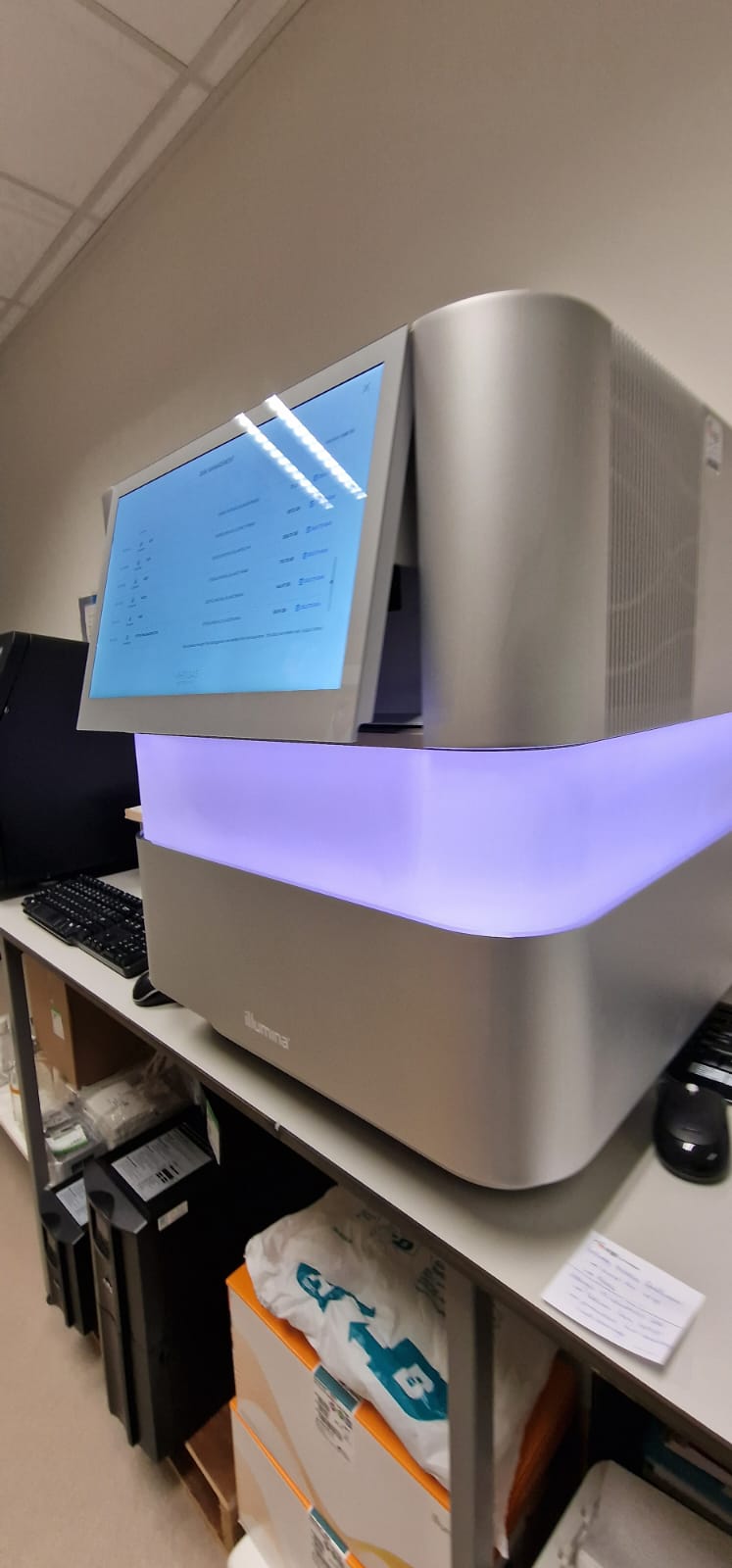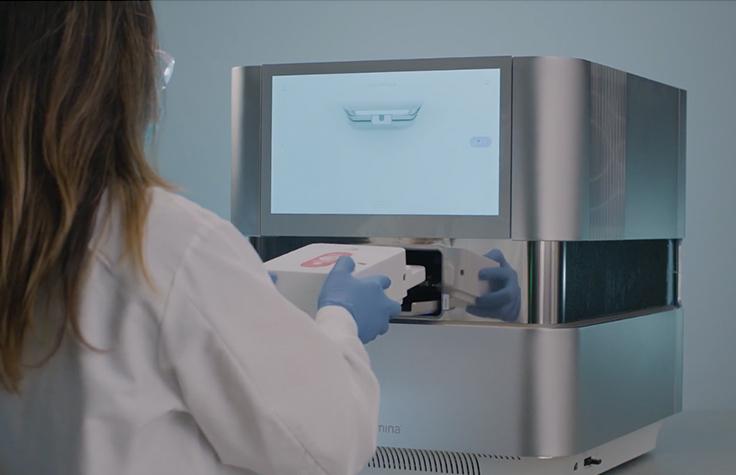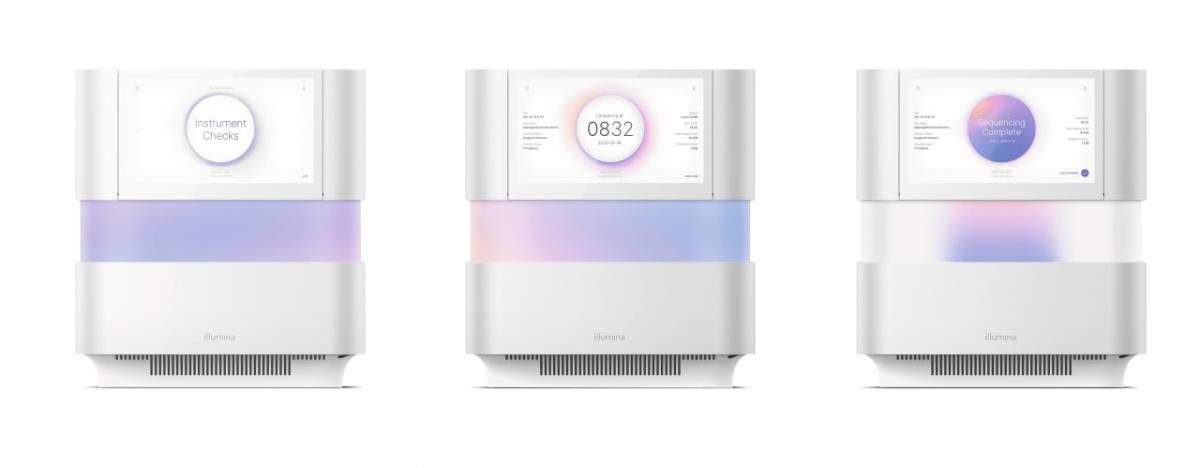NextSeq 2000 Sequencing System
The Illumina NextSeq 2000 Sequencing System is a benchtop next-generation sequencing (NGS) system that offers mid-throughput sequencing capabilities. It is designed to be affordable and easy to use, making it ideal for a variety of research and clinical applications.
Can generate up to 200 gigabases (Gb) of data per run, which is sufficient for sequencing a human genome in about 24 hours. It can also be used to sequence a variety of other samples, such as exomes, targeted genes, and RNA transcripts.
With the ability to generate up to 200 gigabases (Gb) of data per run, the NextSeq 2000 is a workhorse, capable of sequencing a human genome in approximately 24 hours. This impressive throughput not only expedites research processes but also enhances the efficiency of large-scale genomic initiatives. Beyond whole-genome sequencing, the system showcases its versatility by catering to a variety of sample types, including exomes, targeted genes, and RNA transcripts. Researchers can harness the NextSeq 2000 for a wide array of applications, adapting its capabilities to suit the specific requirements of their experiments.
Introduction
Welcome to the next era of genomic sequencing—introducing the NextSeq 2000. This cutting-edge platform stands as a testament to innovation, offering researchers a powerful solution for high-throughput sequencing with unprecedented accuracy and versatility. Let's delve into the features that make the NextSeq 2000 a game-changer in the world of genomics.
The NextSeq 2000 System uses Illumina's proven sequencing by synthesis (SBS) technology to generate high-quality data. SBS is a cyclic process that involves adding nucleotides to a growing DNA strand one base at a time. The NextSeq 2000 System uses a variety of features to improve the accuracy and efficiency of the SBS process, such as:
- Patterned flow cells: The NextSeq 2000 System uses patterned flow cells that contain billions of nanowells. Each nanowell contains a single DNA molecule, which ensures that the DNA molecules are evenly spaced and sequenced efficiently.
- Dual-slide mode: The NextSeq 2000 System can run two flow cells simultaneously, which doubles the throughput of the system.
- On-board cluster generation: The NextSeq 2000 System can generate clusters on-board, which eliminates the need for a separate cluster generation step. This reduces the time it takes to prepare a library for sequencing.
The NextSeq 2000 System is a versatile and powerful sequencing system that can be used for a variety of applications, including:
- Whole-genome sequencing: The NextSeq 2000 System can be used to sequence entire genomes of humans, animals, plants, and microbes. This information can be used to study the genetic basis of disease, identify new drug targets, and develop personalized treatment plans.
- Exome sequencing: The NextSeq 2000 System can be used to sequence the exome, which is the protein-coding portion of the genome. This information can be used to identify genetic mutations that cause disease.
- Targeted gene sequencing: The NextSeq 2000 System can be used to sequence a specific set of genes. This is useful for studying the genetic basis of disease, identifying new drug targets, and monitoring the response to therapy.
- RNA sequencing: The NextSeq 2000 System can be used to sequence RNA transcripts. This information can be used to study gene expression, identify alternative splicing events, and detect fusion transcripts.
The NextSeq 2000 System is a popular choice for researchers and clinicians because of its affordability, ease of use, and versatility. It is a valuable tool for a variety of genomics applications.
The NextSeq 2000 System uses Illumina's proven sequencing by synthesis (SBS) technology to generate high-quality data. SBS is a cyclic process that involves adding nucleotides to a growing DNA strand one base at a time. The NextSeq 2000 System uses a variety of features to improve the accuracy and efficiency of the SBS process, such as:
- Patterned flow cells: The NextSeq 2000 System uses patterned flow cells that contain billions of nanowells. Each nanowell contains a single DNA molecule, which ensures that the DNA molecules are evenly spaced and sequenced efficiently.
- Dual-slide mode: The NextSeq 2000 System can run two flow cells simultaneously, which doubles the throughput of the system.
- On-board cluster generation: The NextSeq 2000 System can generate clusters on-board, which eliminates the need for a separate cluster generation step. This reduces the time it takes to prepare a library for sequencing.

| Feature | NextSeq 2000 |
|---|---|
| Throughput | Up to 200 Gb per run (dual-slide mode) |
| Read length | Paired-end reads up to 250 bp, single-end reads up to 300 bp |
| Accuracy | Q30 accuracy >85% for paired-end reads and >90% for single-end reads |
| Flow cell | P1 or P2 flow cell |
| Cluster generation | On-board cluster generation |
| Sequencing chemistry | Illumina SBS chemistry |
| Software | Illumina Sequencing Analysis Software (BaseSpace Sequence Hub or DRAGEN) |
| Applications | Whole-genome sequencing, exome sequencing, targeted gene sequencing, RNA sequencing, metagenomics, 16S rRNA sequencing |
| Benefits | Affordable, easy to use, versatile, high-quality data |
Revolutionizing Genomic Discovery: Unleashing the Power of Illumina NextSeq 2000 Sequencing System
The NextSeq 2000 boasts a suite of key features that collectively elevate it to the forefront of genomic sequencing technology. Engineered for high-throughput sequencing, it excels in delivering rapid results without compromising accuracy, a crucial aspect for projects with demanding turnaround times. Its optimized design ensures efficient data generation, making it an ideal solution for researchers seeking timely and reliable genomic insights. The platform's versatility is a standout feature, adapting seamlessly to a spectrum of applications, from targeted gene panels to comprehensive whole-genome sequencing and transcriptomics. This adaptability empowers researchers to explore diverse genomic landscapes with ease.
Sequencing accuracy at scale is a paramount concern in genomics, and the NextSeq 2000 addresses this with advanced technology, ensuring high precision even in large-scale projects. This reliability in data generation is a cornerstone for robust genomic analysis and interpretation. Navigating the complexities of genomic sequencing is simplified through the user-friendly interface of the NextSeq 2000. Streamlined workflows and intuitive controls cater to both seasoned experts and those new to high-throughput sequencing, fostering a user-friendly environment for researchers.
The advantages of the NextSeq 2000 further underscore its position as a leader in genomic sequencing. It introduces cost-effectiveness to high-throughput sequencing, democratizing access to advanced genomic research without compromising quality. Real-time data analysis capabilities set it apart in the era of big data, allowing researchers to obtain insights on-the-fly, expediting decision-making processes and enabling swift adjustments to experimental parameters. As research demands grow, the NextSeq 2000 scales effortlessly to meet them, ensuring seamless expansion from small-scale studies to large-scale genomic initiatives.
The diverse applications of the NextSeq 2000 span across critical areas of genomics research. In cancer genomics, it enables researchers to uncover the genetic intricacies of cancer, facilitating comprehensive studies on mutations, genomic variations, and potential therapeutic targets for personalized treatment strategies. Delving into single-cell genomics, the NextSeq 2000 unravels the complexity of individual cells, providing in-depth insights into cellular heterogeneity and function. For metagenomics, it serves as a reliable ally, allowing researchers to explore microbial communities and environmental samples with confidence, providing a comprehensive view of diverse microbial ecosystems. The NextSeq 2000 thus emerges not just as a sequencing platform but as a catalyst for transformative discoveries in the expansive field of genomics.
- Supported read lengths: Paired-end reads up to 250 bp, single-end reads up to 300 bp
- Accuracy: Q30 accuracy >85% for paired-end reads and >90% for single-end reads
- Flow cells: P1 or P2 flow cell
- Cluster generation: On-board cluster generation
Conclusion
The NextSeq 2000 is not just a sequencing platform; it's a catalyst for genomic innovation. With its high throughput, flexibility, and cost-effectiveness, this platform paves the way for transformative discoveries. Elevate your genomic research, embrace the future—choose the NextSeq 2000 for a journey into unparalleled sequencing excellence.




